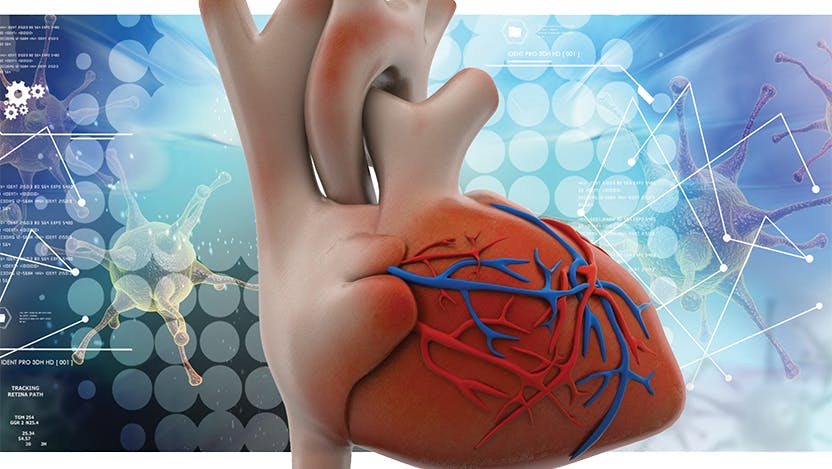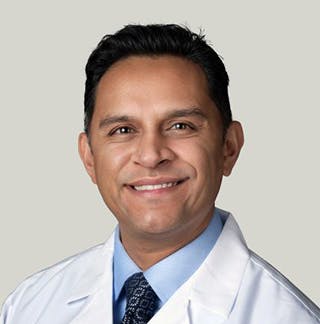UChicago Medicine research discovers new insights into pacemaker use in heart failure patients

Nearly 6 million patients in the United States suffer from heart failure. Studies suggest half of them could die from this disease within five years of their diagnosis. One significant cause of heart failure is an abnormal electrical pattern in the heart known as left bundle branch block.
University of Chicago Medicine’s Heart and Vascular Center physicians, however, have published an important new investigation on the causes of this disorder and suggest new ways to treat it. This study could help cardiologists understand the underlying cause of left bundle branch block in patients with heart failure and should improve selection of patients who might benefit.
Their findings offer a fresh perspective, bringing rigor and modernization to decades-old studies. The prevailing hypothesis, based on seminal work, much of it published more than 40 years ago, was limited by outdated technology and small sample size. UChicago Medicine physicians were able to increase the number of patients analyzed and to focus in detail on each patient’s electrical conduction system.
They used multi-electrode catheters and 3D electro-anatomic mapping systems to examine both the right and the left sides of the heart. A total of 88 left-septal conduction recordings were analyzed in 85 patients. Seventy-two of those patients demonstrated “left bundle branch block patterns.” These include delayed activation of the left ventricle chamber of the heart, causing it to contract later than the right ventricle, as well as other cardiac abnormalities.
The researchers found that the electrocardiogram pattern of left bundle branch block encompasses a broad spectrum of disorders. Some of these demonstrated true conduction block; others had preserved electrical activation (but were previously thought to have blocked conduction). This observation has important implications for patients, the researchers say. It helps refine the understanding of physiology and may be used to guide therapeutic pacing therapies.
“Going into this study, we sought to go back to the fundamentals,” said Gaurav Upadhyay, MD, director of the Heart Station at UChicago Medicine. “What causes the EKG pattern of left bundle branch block,” they wondered, in patients with heart failure?
“Our first key finding was that the pattern we call left bundle branch block actually includes a mixed group of patients,” he added. “Almost two-thirds had focal disease causing the pattern. But a little more than one-third of patients demonstrated no discrete block. This was a surprise.”
It demonstrated the limitations of our current definitions of left bundle branch block using EKGs from “His bundle pacing,” a way to restore functional cardiac output by manipulating the system in order to recover and improve pumping function. This form of cardiac pacing—named after a Swiss cardiologist who first described the His bundle and its role in transmitting atrial impulses to the ventricles—lets physicians tap into the wiring system of the heart and restore something similar to normal conduction.
“With His bundle pacing, we have a new therapeutic approach. We can insert a lead, or wire, into the center of the heart,” said Upadhyay. “In many cases we can use that to correct left bundle branch block.”
“There has been some debate on how this could possibly work,” he added. “Once we saw the physiology of where the block happens, the answer became clear. We capture healthy electrical fibers just beyond an area of focal disease. This re-engages the heart’s normal electrical system.”
These findings give UChicago Medicine heart and vascular specialists a deeper understanding of what causes left bundle branch block in humans and enables them to take significant steps towards identifying innovative approaches to treating heart failure.
“It is exciting when the results have far-reaching clinical implications for patients with heart failure,” said Roderick Tung, MD, senior author of the study and director of cardiac electrophysiology at UChicago Medicine. “Our findings question a paradigm that has not been confirmed or disproven in more than 40 years in the field.”
The paper, “Intra-cardiac Delineation of Septal Conduction in Left Bundle Branch Patterns, Mechanistic Evidence of Left Intra-Hisian Block Circumvented by His Pacing,” was published April 16, 2019, in the American Heart Association journal Circulation. The results were presented at the Heart Rhythm Society Scientific Sessions in San Francisco in May 2019.
Additional UChicago Medicine authors include Tharian Cherian, MD; Dalise Y. Shatz; Andrew D. Beaser, MD; Zaid Aziz, MD; Cevher Ozcan, MD; Michael T. Broman, MD; and Hemal Nayak, MD.

Gaurav Upadhyay, MD
An expert in cardiac rhythm devices, Gaurav A. Upadhyay, MD, cares for patients with arrhythmia, fainting (syncope) and heart failure. Dr. Upadhyay focuses on innovative electrical therapies in heart disease, including cardiac resynchronization therapy (CRT), MRI-compatible pacemakers, subcutaneous defibrillators and catheter ablation.
Learn more about Dr. Upadhyay